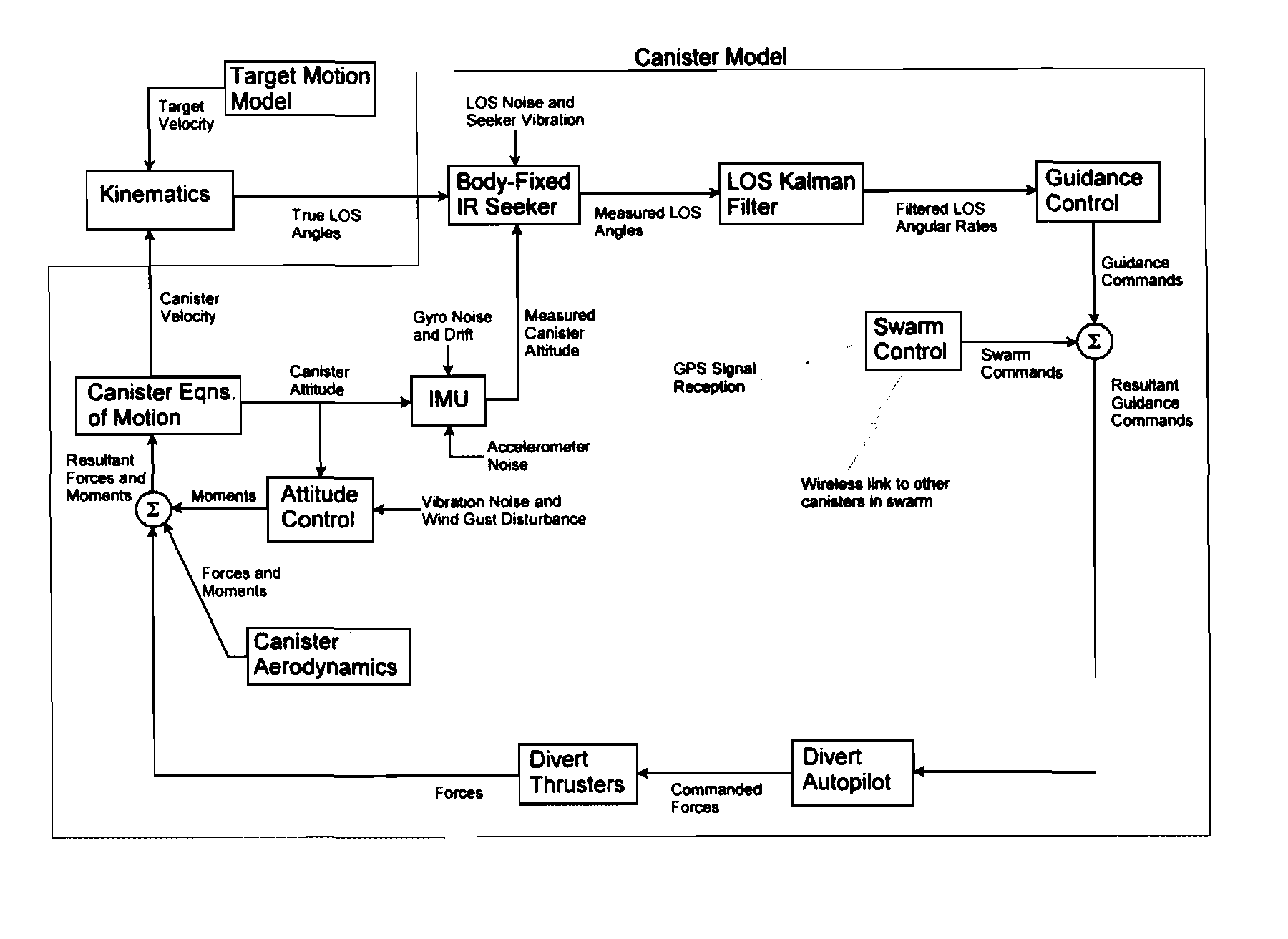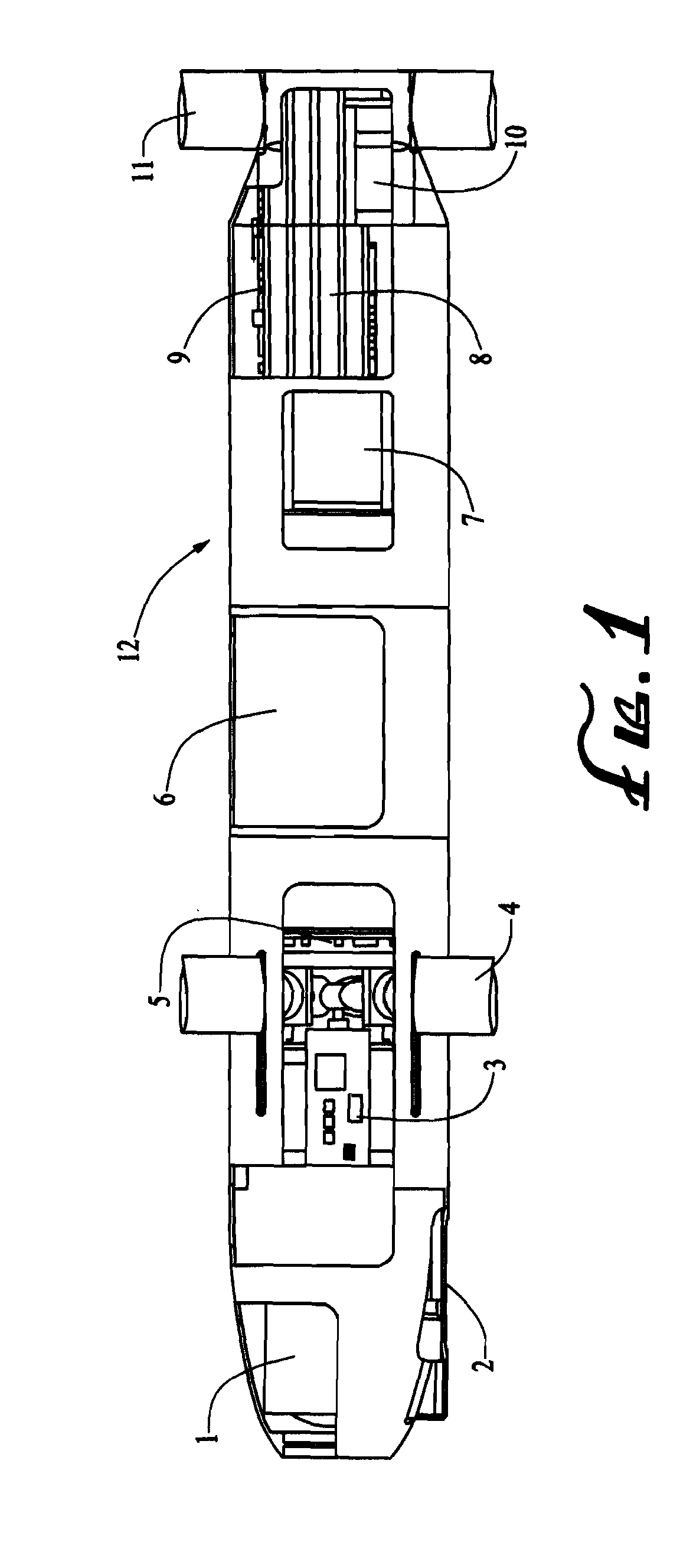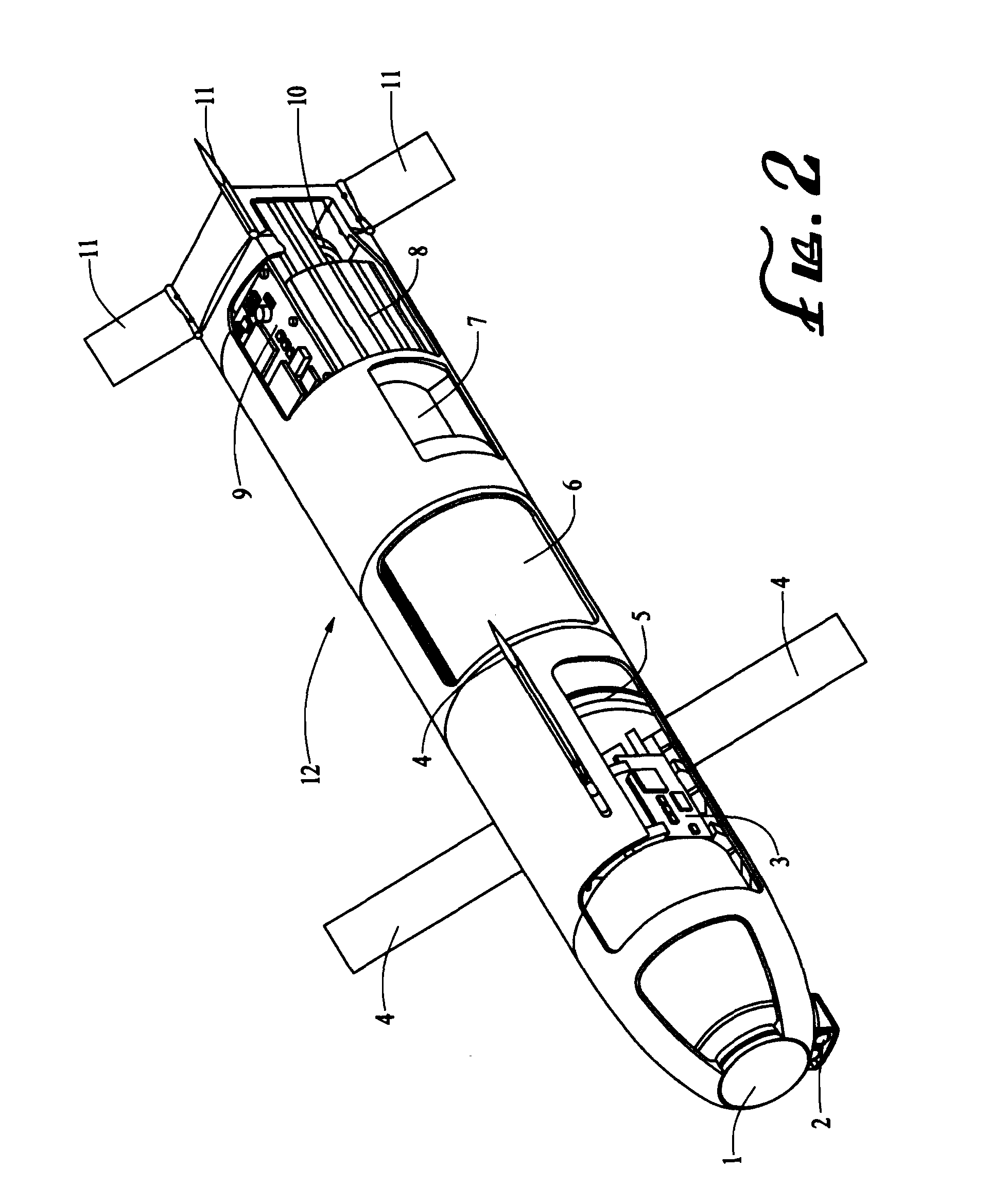Smart counter asymmetric threat micromunition with autonomous target selection and homing
a technology of micromunition and target selection, applied in traffic control systems, navigation instruments, instruments, etc., can solve problems such as large lethal footprints, and achieve the effect of enhancing the probability of mission kill and avoiding redundant targeting
- Summary
- Abstract
- Description
- Claims
- Application Information
AI Technical Summary
Benefits of technology
Problems solved by technology
Method used
Image
Examples
Embodiment Construction
[0014]With reference to FIG. 4, a typical operational scenario is illustrated. A plurality of micromunitions are ejected or deployed from a single or from multiple delivery vehicles or deployment platforms, and spread over a wide area to form a cooperatively interacting group, or swarm, of micromunitions. A large swarm of as many as about 500 micromunitions may engage more than 100 highly maneuverable asymmetric targets. Operationally, the canisters or micromunitions function cooperatively as autonomous agents that rely on simple instructions to achieve a common goal. The micromunitions are autonomous in that there is no centralized control, or hub, in the wireless communication network to direct them.
[0015]Each micromunition transmits messages to the other canisters concerning its sensor and flight dynamics measurements, and likewise receives such messages from each of the other micromunitions functioning as a node in the network. This message traffic is used initially or shortly a...
PUM
 Login to View More
Login to View More Abstract
Description
Claims
Application Information
 Login to View More
Login to View More - R&D
- Intellectual Property
- Life Sciences
- Materials
- Tech Scout
- Unparalleled Data Quality
- Higher Quality Content
- 60% Fewer Hallucinations
Browse by: Latest US Patents, China's latest patents, Technical Efficacy Thesaurus, Application Domain, Technology Topic, Popular Technical Reports.
© 2025 PatSnap. All rights reserved.Legal|Privacy policy|Modern Slavery Act Transparency Statement|Sitemap|About US| Contact US: help@patsnap.com



